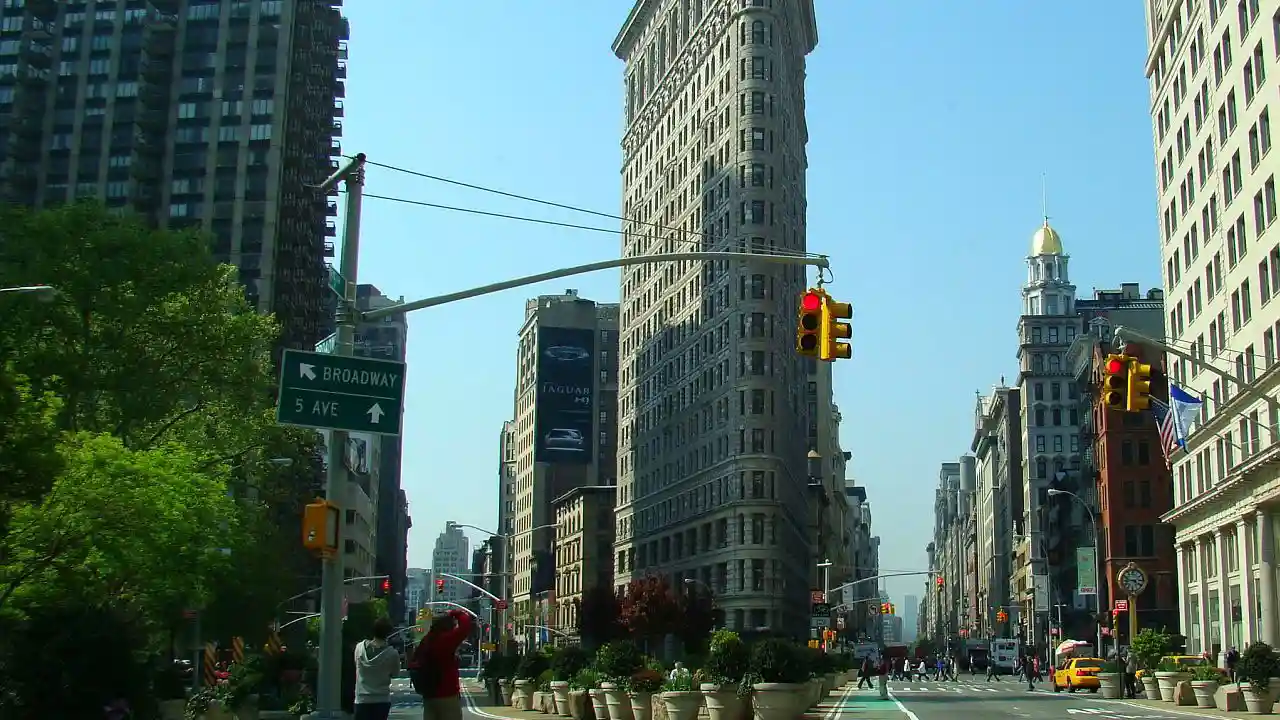Creating a Wildlife Friendly Garden 5 Essential Features
Design a garden that attracts and supports local wildlife with these 5 essential features. Enhance biodiversity in your backyard.

Creating a Wildlife Friendly Garden 5 Essential Features
Hey there, fellow garden enthusiasts! Ever thought about turning your backyard into a bustling hub for local wildlife? It's not just about pretty flowers and tasty veggies; it's about creating a vibrant ecosystem right outside your door. Attracting wildlife, from buzzing bees and fluttering butterflies to chirping birds and even tiny beneficial insects, can bring so much life and balance to your garden. Plus, it's incredibly rewarding to watch nature thrive in a space you've cultivated. So, let's dive into how you can make your garden a haven for our wild friends. We're going to explore five essential features that will transform your outdoor space into a biodiversity hotspot. Get ready to welcome some new neighbors!
Provide Food Sources for Garden Wildlife
First things first, if you want wildlife to visit and stick around, you've got to offer them a good meal. Think of your garden as a buffet for nature. Different creatures have different dietary needs, so variety is key. For pollinators like bees and butterflies, nectar-rich flowers are a must. Consider planting a mix of native wildflowers, which are often the best food sources for local insects. Think about plants like coneflowers, milkweed (especially important for monarch butterflies!), asters, and goldenrod. These aren't just beautiful; they're vital fuel stations. For birds, berries and seeds are highly attractive. Shrubs like elderberry, serviceberry, and dogwood produce delicious berries that birds adore. Sunflowers, millet, and thistle are great for seed-eating birds. Don't forget about hummingbirds! They love tubular, brightly colored flowers like bee balm, cardinal flower, and fuchsia. And for those tiny beneficial insects that help keep pests in check, consider planting herbs like dill, fennel, and cilantro, which produce small flowers that attract them. Remember, a diverse menu means a diverse guest list!
Recommended Plants for Wildlife Food Sources
- For Pollinators:
- Echinacea purpurea (Purple Coneflower): Hardy, beautiful, and a magnet for bees and butterflies.
- Asclepias syriaca (Common Milkweed): The sole host plant for Monarch butterfly caterpillars. Essential!
- Symphyotrichum novae-angliae (New England Aster): Late-season nectar source, crucial for migrating butterflies.
- Solidago canadensis (Canada Goldenrod): Provides abundant pollen and nectar.
- For Birds (Berries & Seeds):
- Sambucus canadensis (Elderberry): Produces dark berries loved by many bird species.
- Amelanchier canadensis (Serviceberry): Early spring berries are a bird favorite.
- Cornus sericea (Red Osier Dogwood): White berries provide winter food.
- Helianthus annuus (Sunflower): Seeds are a high-energy food source.
- For Hummingbirds:
- Monarda didyma (Bee Balm): Bright red, tubular flowers are irresistible.
- Lobelia cardinalis (Cardinal Flower): Stunning red flowers, a hummingbird magnet.
- Fuchsia spp.: Many varieties offer tubular flowers perfect for hummingbirds.
- For Beneficial Insects:
- Anethum graveolens (Dill): Attracts lacewings and hoverflies.
- Foeniculum vulgare (Fennel): Another great choice for attracting beneficials.
- Coriandrum sativum (Cilantro): When allowed to flower, it's a tiny insect paradise.
Ensure Access to Water for Thirsty Critters
Just like us, wildlife needs water to survive. Providing a reliable water source can make a huge difference in attracting and sustaining a diverse range of creatures in your garden. A simple bird bath is a fantastic start. Make sure it's shallow enough for small birds to drink and bathe safely, and clean it regularly to prevent algae buildup and mosquito breeding. You can also add some stones or pebbles to the bird bath to give insects a safe landing spot to drink without drowning. If you're feeling ambitious, a small pond or a water feature with moving water can be incredibly attractive to a wider variety of wildlife, including frogs, dragonflies, and even small mammals. Moving water, like a small fountain, also helps prevent mosquitoes and keeps the water oxygenated. Remember, even a shallow dish of water can be a lifesaver on a hot day for a thirsty bee or butterfly.
Water Feature Options and Considerations
- Bird Baths:
- Basic Ceramic Bird Bath: Easy to clean, affordable. Look for models with textured surfaces for better grip.
- Solar-Powered Bird Bath with Fountain: Adds movement, which attracts more birds and helps deter mosquitoes.
- Heated Bird Bath: Essential for providing water in freezing winter conditions.
- Small Ponds/Water Features:
- Pre-formed Pond Liner Kit: Simplest way to install a small pond. Includes liner, pump, and sometimes a filter.
- Flexible Pond Liner: Allows for custom shapes and sizes. Requires more digging and shaping.
- Water Feature Pumps: Look for submersible pumps with adjustable flow rates.
Product Recommendations for Water Features
Let's talk about some specific products you might consider. For a basic, reliable bird bath, the ‘Evergreen Garden Bird Bath with Pedestal’ (around $40-$60) is a popular choice. It's made of durable resin, lightweight, and easy to clean. For something with a bit more flair and functionality, the ‘Sunnydaze Decor Solar Bird Bath Fountain’ (typically $70-$100) is great. It has a built-in solar panel that powers a small pump, creating a gentle bubbling effect that birds love. If you're in a colder climate and want to provide water year-round, the ‘Allied Precision Industries 650 Heated Bird Bath’ (about $50-$70) is a solid option. It's thermostatically controlled to prevent freezing. For a small pond, a good starter kit is the ‘Tetra Pond Water Garden Kit’ (around $150-$200), which usually includes a liner, pump, and filter, making it relatively easy for beginners to set up. When choosing a pump for a custom water feature, the ‘Pondmaster 02212 Submersible Pump’ (various sizes, $30-$100+) is a reliable brand known for its durability and efficiency. Always check reviews and ensure the product suits your specific climate and garden size.
Offer Shelter and Safe Havens for Wildlife
Wildlife needs places to hide from predators, raise their young, and shelter from harsh weather. Your garden can provide these crucial safe havens. Think about creating layers in your planting: ground cover, shrubs, and trees. Dense shrubs and evergreens offer excellent year-round cover for birds. A brush pile in a quiet corner of your garden can be a fantastic habitat for small mammals, reptiles, and amphibians. Consider leaving some areas of your garden a bit 'wild' – perhaps a patch of tall grasses or a log pile. These seemingly messy spots are actually vital ecosystems. Birdhouses and bat boxes can also provide specific nesting and roosting sites. Just make sure they are placed in appropriate locations, away from predators, and cleaned annually. Even a simple rock pile can offer shelter for lizards and beneficial insects. The more diverse your shelter options, the more diverse your wildlife visitors will be.
Types of Shelter and Their Benefits
- Dense Shrubs and Evergreens: Provide year-round cover, nesting sites for birds, and protection from predators.
- Brush Piles/Log Piles: Offer shelter for small mammals, amphibians, reptiles, and overwintering insects.
- Tall Grasses/Wild Patches: Habitat for insects, small rodents, and ground-nesting birds.
- Birdhouses: Specific nesting sites for cavity-nesting birds.
- Bat Boxes: Roosting sites for bats, which are excellent mosquito controllers.
- Rock Piles: Shelter for lizards, snakes, and beneficial insects.
Product Recommendations for Wildlife Shelters
For birdhouses, the ‘Woodlink Cedar Bluebird House’ (around $25-$40) is a popular choice for attracting bluebirds, known for its durable cedar construction. If you're looking to attract a wider variety, the ‘Perky-Pet 710B Wood Bird House’ (about $15-$25) offers a more general design. For bat boxes, the ‘Wildlife World Eco Bat Box’ (typically $30-$50) is well-regarded for its sustainable materials and effective design. Remember to place bat boxes at least 10-15 feet high, facing south or east to catch morning sun. For insect hotels, which provide shelter for beneficial insects like solitary bees and ladybugs, the ‘Gardman Wooden Insect Hotel’ (around $20-$35) is a good starting point. These are great for encouraging natural pest control. When choosing any shelter, consider the materials – natural, untreated wood is usually best – and ensure they are designed to be safe and effective for the target species. Always research the specific needs of the wildlife you hope to attract in your region.
Practice Sustainable and Organic Gardening Methods
This one is huge! What you put into your garden directly impacts the wildlife that visits. Using harsh chemical pesticides, herbicides, and synthetic fertilizers can be incredibly harmful to beneficial insects, birds, and even small mammals. These chemicals can contaminate food sources, water, and habitats, disrupting the delicate balance of your garden ecosystem. Instead, embrace organic gardening practices. This means focusing on soil health through composting and natural amendments, using integrated pest management (IPM) techniques like companion planting and encouraging natural predators, and avoiding synthetic chemicals altogether. A healthy, chemical-free garden is a safe and inviting space for wildlife. It also means you're working with nature, not against it, which ultimately leads to a more resilient and thriving garden.
Key Organic Gardening Practices for Wildlife
- Avoid Chemical Pesticides and Herbicides: These can directly harm or indirectly poison wildlife. Opt for natural pest control methods.
- Composting: Enriches soil naturally, reducing the need for synthetic fertilizers. Healthy soil supports a healthy ecosystem.
- Companion Planting: Strategically planting certain species together to deter pests or attract beneficial insects.
- Encourage Natural Predators: Attract birds, ladybugs, lacewings, and other beneficial insects that prey on garden pests.
- Use Organic Fertilizers: Opt for compost, manure, or other natural soil amendments instead of synthetic chemicals.
- Water Conservation: Use rain barrels or drip irrigation to conserve water, which benefits the wider environment.
Natural Pest Control Product Alternatives
Instead of chemical sprays, consider these organic alternatives. For general pest control, ‘Neem Oil’ (various brands, typically $15-$30 for a concentrate) is a fantastic multi-purpose organic pesticide that disrupts insect feeding and growth. It's safe for pollinators once dry. For slugs and snails, ‘Sluggo Plus’ (around $10-$20) uses iron phosphate, which is safe for pets and wildlife, unlike traditional slug baits. For aphids and other soft-bodied insects, a simple ‘Insecticidal Soap’ (many brands, $10-$20) works by suffocating them and leaves no harmful residue. If you're dealing with fungal issues, ‘Serenade Garden Disease Control’ (about $20-$35) is a biological fungicide that uses beneficial bacteria to combat common plant diseases. Always read labels carefully to ensure products are certified organic and safe for your specific garden environment. The goal is to manage pests without harming the beneficial creatures that help keep your garden in balance.
Create Diverse Habitats and Plantings
Monocultures (gardens with only one type of plant) are boring for wildlife. Diversity is the spice of life, and it's absolutely crucial for a thriving wildlife garden. Think about creating different 'zones' or habitats within your garden. This could include a sunny meadow area with wildflowers, a shady woodland edge with native ferns and understory plants, a wetland area if you have the space for a pond, or even a rock garden. Each of these habitats will attract different types of wildlife. Varying plant heights, textures, and bloom times ensures there's always something available for different creatures throughout the year. Native plants are particularly important here because local wildlife has evolved alongside them and relies on them for food and shelter. They're also often more resilient and require less maintenance once established. The more varied your garden, the more varied the life it will support.
Habitat Diversity Examples and Benefits
- Wildflower Meadow: Attracts a wide range of pollinators, provides seeds for birds.
- Woodland Edge: Offers shade, shelter, and food for birds, small mammals, and amphibians.
- Pond/Wetland Area: Essential for amphibians, dragonflies, and provides drinking water for all wildlife.
- Rock Garden: Provides crevices for lizards, snakes, and beneficial insects.
- Layered Plantings: Different heights (trees, shrubs, perennials, groundcover) offer varied shelter and food sources.
- Native Plant Focus: Crucial for supporting local insect populations, which form the base of the food web.
Considerations for Different Garden Sizes
Even if you have a small garden, you can still create diverse habitats. For a tiny urban space, focus on container gardening with a variety of native plants, a small bird bath, and perhaps an insect hotel. If you have a medium-sized suburban yard, you can incorporate a small pond, a mix of native shrubs and perennials, and a designated 'wild' corner. For larger properties, you have the luxury of creating more distinct zones, like a full wildflower meadow, a dedicated woodland garden, or even a larger pond. The key is to think about how different elements can interact to support a wider range of species. Don't feel overwhelmed; even small changes can make a big difference. Start with one or two features and build from there. Every little bit helps in creating a more biodiverse and vibrant environment for our wild friends.
So there you have it! Five essential features to transform your garden into a thriving haven for wildlife. By providing food, water, shelter, practicing sustainable methods, and embracing diversity, you're not just gardening; you're contributing to a healthier planet. It's a journey, not a destination, and every step you take makes a difference. Happy gardening, and enjoy watching your garden come alive with nature!
:max_bytes(150000):strip_icc()/277019-baked-pork-chops-with-cream-of-mushroom-soup-DDMFS-beauty-4x3-BG-7505-5762b731cf30447d9cbbbbbf387beafa.jpg)






